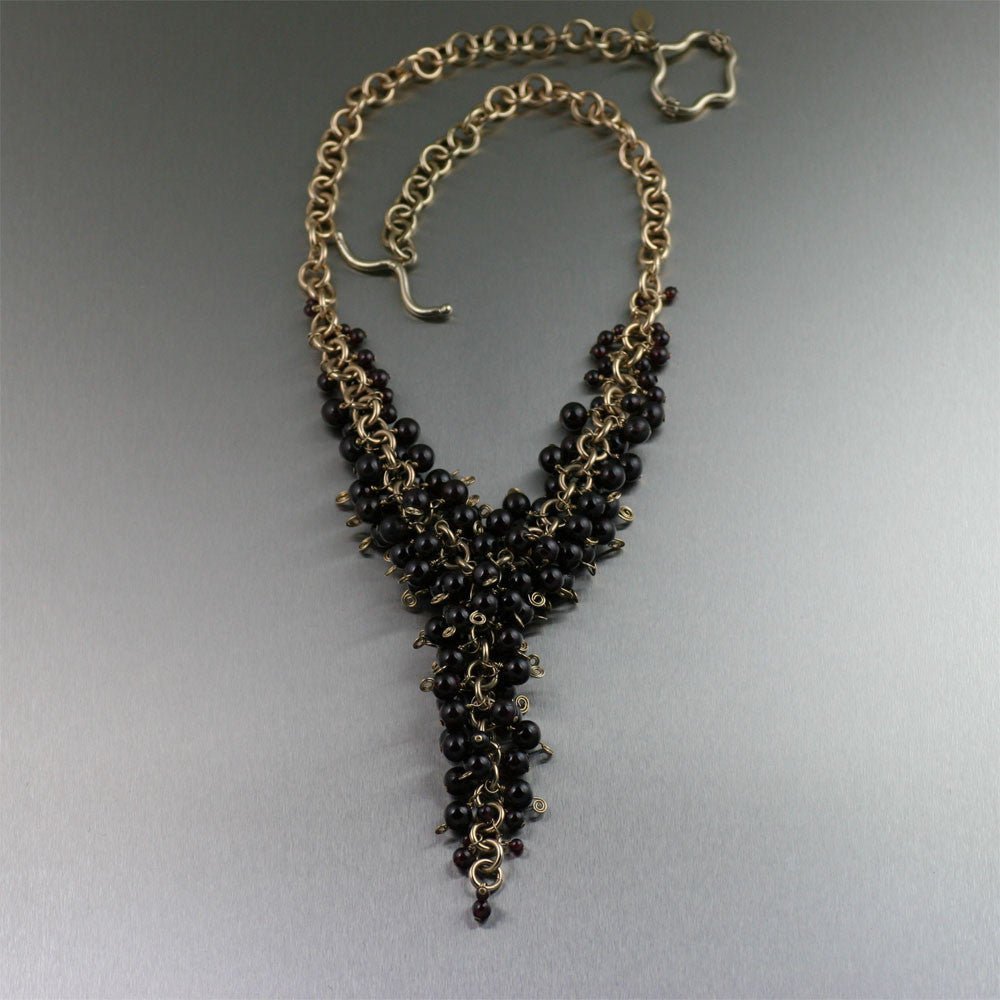Gemstone Jewelry Blog
Introducing our luxurious collection of gemstone jewelry, where each piece is meticulously crafted to showcase the natural beauty and vibrant colors of our exquisite gemstones. From dazzling gemstone cocktail rings and elegant gemstone rings to statement-making large faceted gemstone rings, our unique designs are perfect for those seeking a touch of sophistication and glamour. Adorn yourself with our exquisite beaded gemstone necklaces, featuring carefully selected beads that complement the vibrant hues of the gemstones. Complete your look with our enchanting gemstone pendants, designed to captivate and inspire with their intricate details and alluring charm.
Experience the enchanting world of our gemstone jewelry, where elegance meets allure, and color meets radiance. Adorn yourself with sophistication and sparkle, and find the perfect piece to express your unique style and enhance your natural beauty. Unleash your inner radiance and let our jewelry illuminate your path.
A New Addition to the Sonoma Jewelry Collection - Merlot
Published Date:October 29, 2006
Breathtaking 14K Gold Filled Chainmail Jewelry Garnished with Garnets
Let me unveil the latest addition to my handcrafted jewelry collection – a splendid ensemble of 14K Gold Filled Chainmail studded with various sizes of sparkling Garnets. A symphony of craftsmanship and artistic vision, each piece echoes the natural beauty of Garnets in an exquisite charm. The entire collection – bracelets, earrings, and necklaces – have been laced in ambers, amethyst, pearls, and serpentine. Feast your eyes on my portfolio site under the alluring Sonoma Collection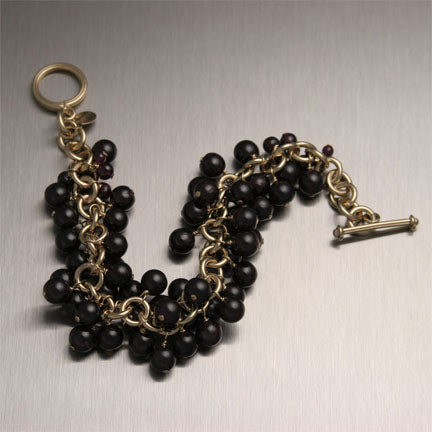
A Glimpse into the Enigmatic Aura of Garnets Here are some captivating details that make Garnets remarkably fascinating:
A Flamboyant Palette
Interestingly, Garnets are not restricted to the iconic red hue. From plush pinks to mesmerizing greens, vibrant oranges, mellow yellows, classic browns, and profound blacks, they cover a wide spectrum of colors.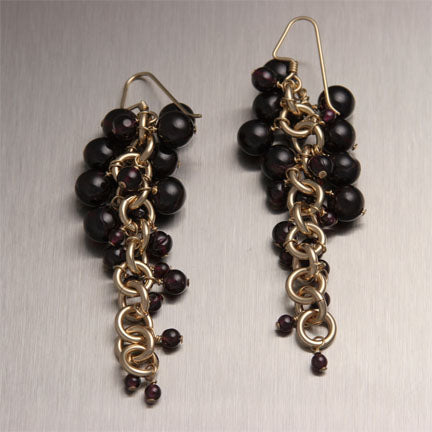
A Cherished Gift for Birthdays and Anniversaries
Endowed with the power to bring prosperity and joy, Garnets make a perfect birthday present, especially for January-born individuals. They are also traditionally conferred as 2nd and alternate 6th-anniversary gifts, symbolizing eternal love and affection.
The Widespread Occurrence and Sheer Commonality
Garnets are found across the globe, making it a common yet enthralling gemstone.
Infusion of Positivity and Healing
Garnet emanates an aura of love, courage, and stamina. Additionally, it exhibits healing characteristics. It revitalizes the body, boosts metabolism, treats spinal and cellular disorders, purifies the bloodstream, heart, and lungs, and even regenerates DNA – A true symbol of renewal and reincarnation.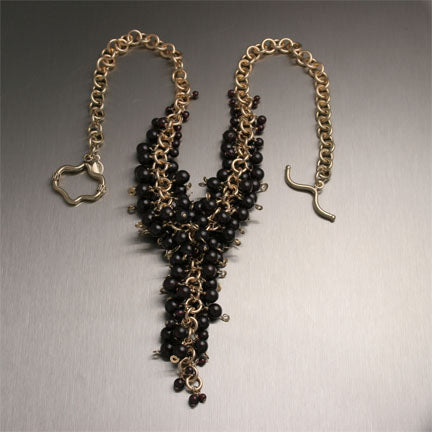
Astonishing Features and Psychological Benefits
Garnets, whether small, faceted, or large opaque pieces, captivate the onlookers with their transparency or translucency. These gems sharpen one's self-perception and perception of others. They dissolve ingrained behavioral patterns, making way for new, positive habits.
Enhancement of Mental Agility and Emotional Liberation
Garnets stimulate mental flexibility, encouraging the discarding of obsolete ideas. Emotionally, Garnet is a liberator – it removes inhibitions and taboos, opens up the heart, and bestows self-confidence – a true friend in the journey of finding one's true self.
FAQ's
1. What are the different sizes of Garnets used in these jewelry pieces?
In our 14K Gold Filled Chainmail collection, we've incorporated three different sizes of Garnets to create an alluring blend of elegance and intricacy.
2. Where can I access this chainmail collection?
You can browse through our complete collection, which includes individual and complete sets, on our portfolio site under the Sonoma Collection.
3. Are Garnets the traditional birthstones for any particular month?
Yes, Garnets are traditionally considered to be January's birthstones. They serve as a perfect gift for loved ones celebrating their birthdays in this month.
4. What kind of healing properties does a Garnet possess?
Garnets are known to possess various healing properties. They rejuvenate your body, stimulate metabolism, treat spinal and cellular disorders, cleanse and revitalize the heart, lungs, and blood, and even possess the ability to regenerate DNA.
5. Does Garnet have any psychological benefits?
Indeed, it does. It sharpens your self-perception and perceptions of others. It helps dissolve ingrained behavioral patterns and encourages the adoption of new, positive habits.
Chrysoprase – The Stone of Summer
Published Date:June 18, 2006
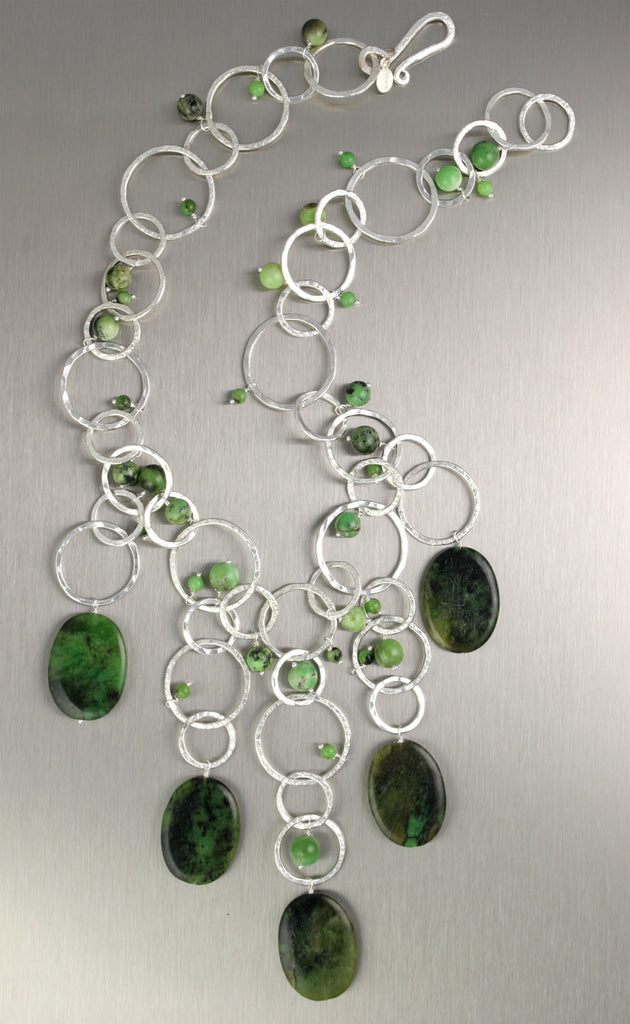
Chrysoprase (also chrysophrase) is a gemstone variety of chalcedony (fibrous form of quartz) that contains small quantities of nickel. Its color is normally apple-green, but varies to deep green. It is cryptocrystalline, which means that it is composed of crystals so fine that they cannot be seen as distinct particles under normal magnification. This sets it apart from rock crystal, amethyst, citrine, and the other varieties of crystalline quartz which are basically transparent and formed from easily recognized six-sided crystals. Other members of the cryptocrystalline quartz family include agate, carnelian, and onyx. Unlike many non-transparent members of the quartz family, it is the color of chrysoprase, rather than any pattern of markings, that makes it desirable. The word chrysoprase comes from the Greek chrysos meaning 'gold' and prason, meaning 'leek'.
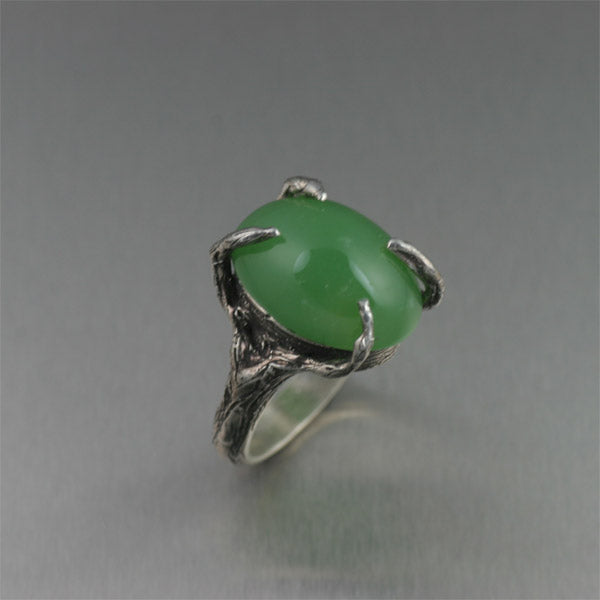
Due to its comparative scarcity and pleasing green color, chrysoprase is one of the most prized varieties of quartz. Higher quality specimens often rival fine jade, for which it is sometimes mistaken. Cut into cabochons (smooth domed gems with flat backs for use in jewelry), it can be as sought after as fine amethyst. Its use in jewelry dates back to ancient Egypt, where it was fashioned into necklaces, scarabs, and objects of adornment.
Unlike emerald which owes its beautiful green color to the presence of chromium, the color of chrysoprase is due to trace amounts of nickel in the structure. The nickel reportedly occurs as platelets of the talc-like mineral willemseite. Chrysoprase results from the deep weathering or lateritization of nickeliferous serpentinites or other ultramafic ophiolite rocks. In the Australian deposits, chrysoprase occurs as veins and nodules with brown goethite and other iron oxides in the magnesite-rich saprolite below an iron and silica cap.
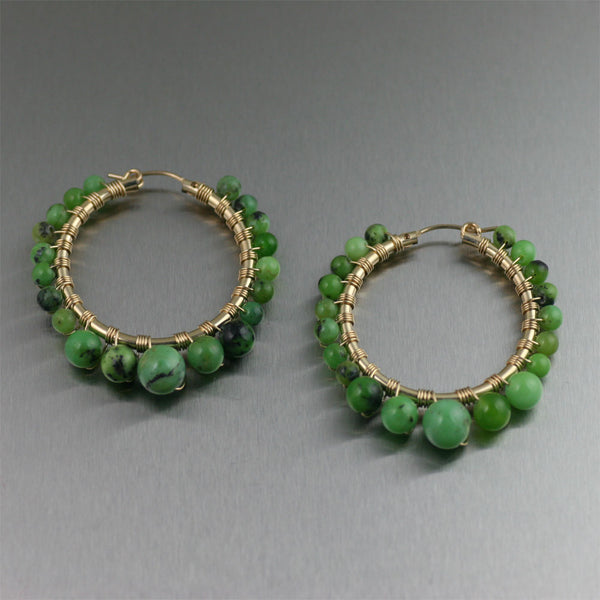
The best known sources of chrysoprase are Australia, Germany, Poland, Russia, Arizona, California, and Brazil.
Last weekend at the International Gem & Jewelry Show in San Mateo, California, I was able to obtain some choice cabochons and beads from one of my long time vendors who’s family owns and mines Chrysoprase in Brazil. Chrysoprase has recently become an alternative to turquoise and coral, and is a great accent color for summer wardrobes. I will be posting pictures of rings, earrings, and necklaces featuring this unique gemstone as they are finished.
Subscribe
15% OFF YOUR FIRST PURCHASE
As a subscriber, you get first access to my latest jewelry designs and subscriber-only discounts!
Recent Articles
-
Fine Gemstone Jewelry Throughout the Year
Published date:September 22, 2023
-
June Birthstones: The Allure of Pearls and Moonstones
Published date:June 05, 2023
-
Unveiling the Mystique of Moonstone: History, Geology, and Spiritual Significance
Published date:June 01, 2023
-
The Aquamarine: A Gemstone of Serenity and Courage
Published date:July 22, 2022
-
Your Guide to the Blue Topaz Gemstone
Published date:November 21, 2018
-
A Lesson in Cutting Asteriated Gemstones
Published date:October 08, 2018
-
Jewelry Must-Have: A Gem-Drenched Necklace
Published date:December 15, 2015
-
Peridot – August’s Birthstone
Published date:August 01, 2014
-
Amber Citrine Crystal Quartz Beaded Gemstone Necklace
Published date:March 10, 2014
-
Amazonite Gemstone Jewelry
Published date:February 18, 2014
+Most Popular Articles
2023 Handmade Jewelry Trends: A Fusion of Classic and Contemporary
What Clothes Color Combinations Work Best with Copper Jewelry: A Complete Guide
Top 5 Pure Copper Men's Bracelets for 2022
What Clothes Color Combinations Work Best with Copper Jewelry: A Complete Guide
Shine Bright with John S Brana's Dazzling Aluminum Jewelry Collection

